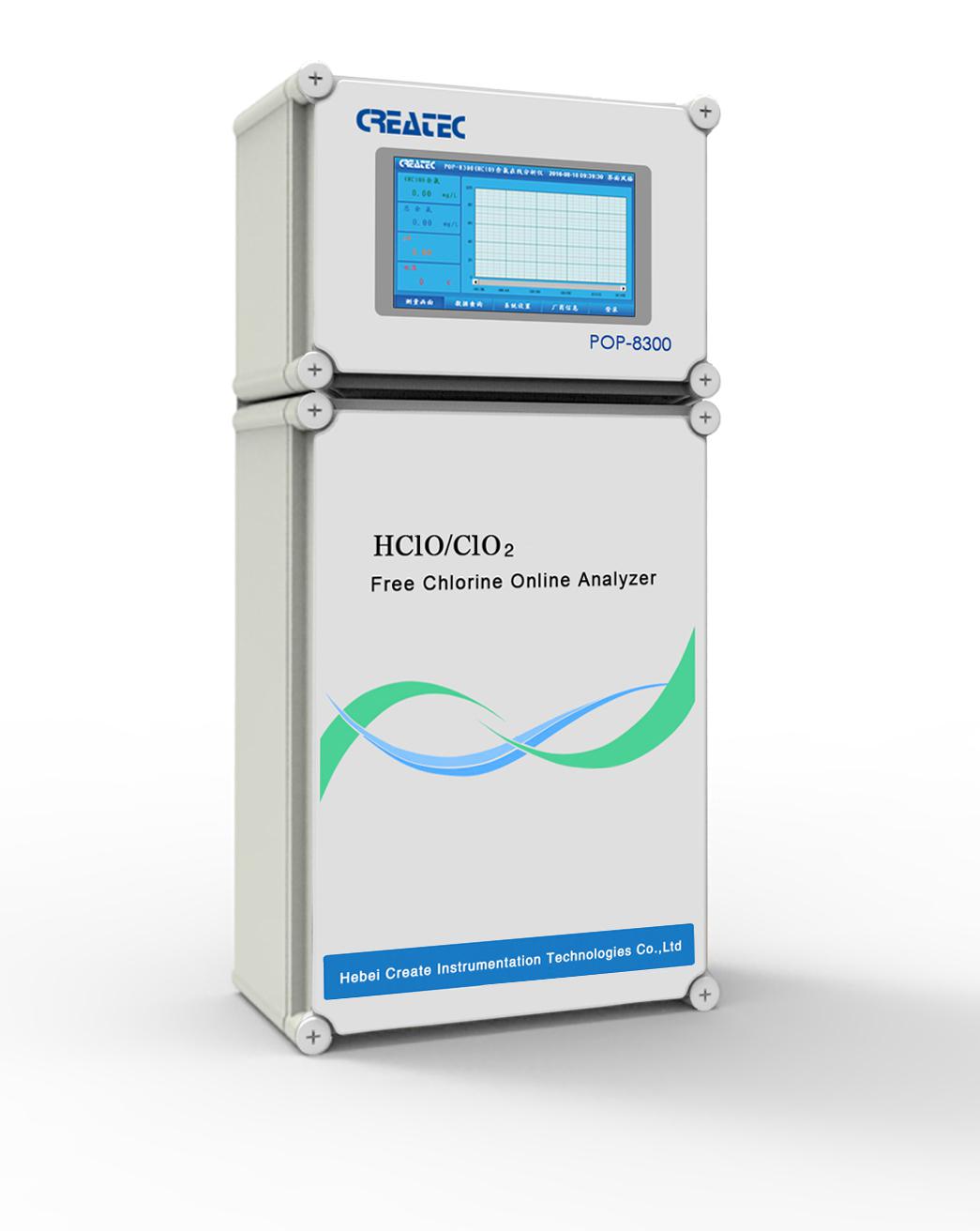Table of Contents
Understanding the Conductivity Detector: A Comprehensive Guide
Conductivity detectors are essential tools in the field of analytical chemistry, used to measure the ability of a substance to conduct electricity. This property is particularly useful in identifying and quantifying ions in a solution, making conductivity detectors a valuable tool in various industries such as pharmaceuticals, environmental monitoring, and Food And Beverage production.
| Model | POP-8300 Free Chlorine Online Analyzer |
| Measurement range | (0.00-2.00)mg/L(ppm) \\\\\\\\\\\\\\\\\\\\\\\\\\\\\\\\\\\\\\\\\\\\\\\\\\\\\\\\\\\\\\\\\\\\\\\\\\\\\\\\\\\\\\\\\\\\\\\\\\\\\\\\\\\\\\\\\\\\\\\\\\\\\\\\u00a0(0.00-20.00)mg/L(ppm) |
| Accuracy | Indication error 10% |
| Resolution | 0.01mg/L(ppm) |
| Communication interface | RS485 MODBUS RTU communication protocol |
| Analog output | Double channel (4-20)mA output; Isolated, reversible, completely adjustable, instrument/transmitter dual mode; \\\\\\\\\\\\\\\\\\\\\\\\\\\\\\\\\\\\\\\\\\\\\\\\\\\\\\\\\\\\\\\\\\\\\\\\\\\\\\\\\\\\\\\\\\\\\\\\\\\\\\\\\\\\\\\\\\\\\\\\\\\\\\\\u00b10.1mA transmission accuracy |
| Control output | Double\\\\\\\\\\\\\\\\\\\\\\\\\\\\\\\\\\\\\\\\\\\\\\\\\\\\\\\\\\\\\\\\\\\\\\\\\\\\\\\\\\\\\\\\\\\\\\\\\\\\\\\\\\\\\\\\\\\\\\\\\\\\\\\\u00a0channels, Load capacity 50mA(Max),AC/DC 30V |
| Power supply | Connected to electric supply AC80-260V;50/60Hz, compatible with all international market power standards(110V;220V;260V;50/60Hz). |
| Working Environment | Temperature:(5-50)\\\\\\\\\\\\\\\\\\\\\\\\\\\\\\\\\\\\\\\\\\\\\\\\\\\\\\\\\\\\\\\\\\\\\\\\\\\\\\\\\\\\\\\\\\\\\\\\\\\\\\\\\\\\\\\\\\\\\\\\\\\\\\\\u2103;relative humidity:\\\\\\\\\\\\\\\\\\\\\\\\\\\\\\\\\\\\\\\\\\\\\\\\\\\\\\\\\\\\\\\\\\\\\\\\\\\\\\\\\\\\\\\\\\\\\\\\\\\\\\\\\\\\\\\\\\\\\\\\\\\\\\\\u226485% RH(non-condensation) |
| Power Consumption | <20W |
| Storage environment | Temperature:(-20-70)\\\\\\\\\\\\\\\\\\\\\\\\\\\\\\\\\\\\\\\\\\\\\\\\\\\\\\\\\\\\\\\\\\\\\\\\\\\\\\\\\\\\\\\\\\\\\\\\\\\\\\\\\\\\\\\\\\\\\\\\\\\\\\\\u2103;relative humidity:\\\\\\\\\\\\\\\\\\\\\\\\\\\\\\\\\\\\\\\\\\\\\\\\\\\\\\\\\\\\\\\\\\\\\\\\\\\\\\\\\\\\\\\\\\\\\\\\\\\\\\\\\\\\\\\\\\\\\\\\\\\\\\\\u226485%RH(non-condensation) |
| Installation | Wall mounted (with the preset back cover) |
| Cabinet weight | \\\\\\\\\\\\\\\\\\\\\\\\\\\\\\\\\\\\\\\\\\\\\\\\\\\\\\\\\\\\\\\\\\\\\\\\\\\\\\\\\\\\\\\\\\\\\\\\\\\\\\\\\\\\\\\\\\\\\\\\\\\\\\\\u226410kg |
| Cabinet dimension | 570*mm*380mm*130mm(H\\\\\\\\\\\\\\\\\\\\\\\\\\\\\\\\\\\\\\\\\\\\\\\\\\\\\\\\\\\\\\\\\\\\\\\\\\\\\\\\\\\\\\\\\\\\\\\\\\\\\\\\\\\\\\\\\\\\\\\\\\\\\\\\u00d7W\\\\\\\\\\\\\\\\\\\\\\\\\\\\\\\\\\\\\\\\\\\\\\\\\\\\\\\\\\\\\\\\\\\\\\\\\\\\\\\\\\\\\\\\\\\\\\\\\\\\\\\\\\\\\\\\\\\\\\\\\\\\\\\\u00d7D) |
One of the key advantages of conductivity detectors is their ability to detect a wide range of ions, including both cations and anions. This versatility makes them ideal for analyzing complex mixtures and identifying unknown substances. Additionally, conductivity detectors are highly sensitive, capable of detecting ions at very low concentrations, making them invaluable in quality control and research applications.
The principle behind conductivity detection is relatively simple. When an electric current is passed through a solution, ions in the solution will carry the current, resulting in a measurable conductivity. The conductivity of a solution is directly proportional to the concentration of ions present, allowing for quantitative analysis of the sample.
There are two main types of conductivity detectors: contact and inductive. Contact conductivity detectors use electrodes that come into direct contact with the sample solution, measuring the conductivity by detecting the flow of current between the electrodes. Inductive conductivity detectors, on the other hand, use a coil to induce a current in the sample solution, eliminating the need for direct contact with the electrodes.
In addition to their sensitivity and versatility, conductivity detectors are also known for their speed and ease of use. They require minimal sample preparation and can provide real-time results, making them ideal for high-throughput applications. Furthermore, conductivity detectors are relatively low cost compared to other analytical techniques, making them accessible to a wide range of industries and research facilities.

One of the key considerations when using a conductivity detector is the choice of electrolyte solution. The conductivity of the electrolyte solution can affect the sensitivity and accuracy of the detector, so it is important to select an appropriate electrolyte based on the ions being analyzed. Additionally, factors such as temperature, pH, and flow rate can also impact the performance of the conductivity detector, so careful calibration and optimization are essential for reliable results.
In conclusion, conductivity detectors are powerful tools for analyzing and quantifying ions in solution. Their sensitivity, versatility, and ease of use make them invaluable in a wide range of industries and research fields. By understanding the principles behind conductivity detection and optimizing the experimental conditions, researchers can harness the full potential of conductivity detectors for accurate and reliable ion analysis.

